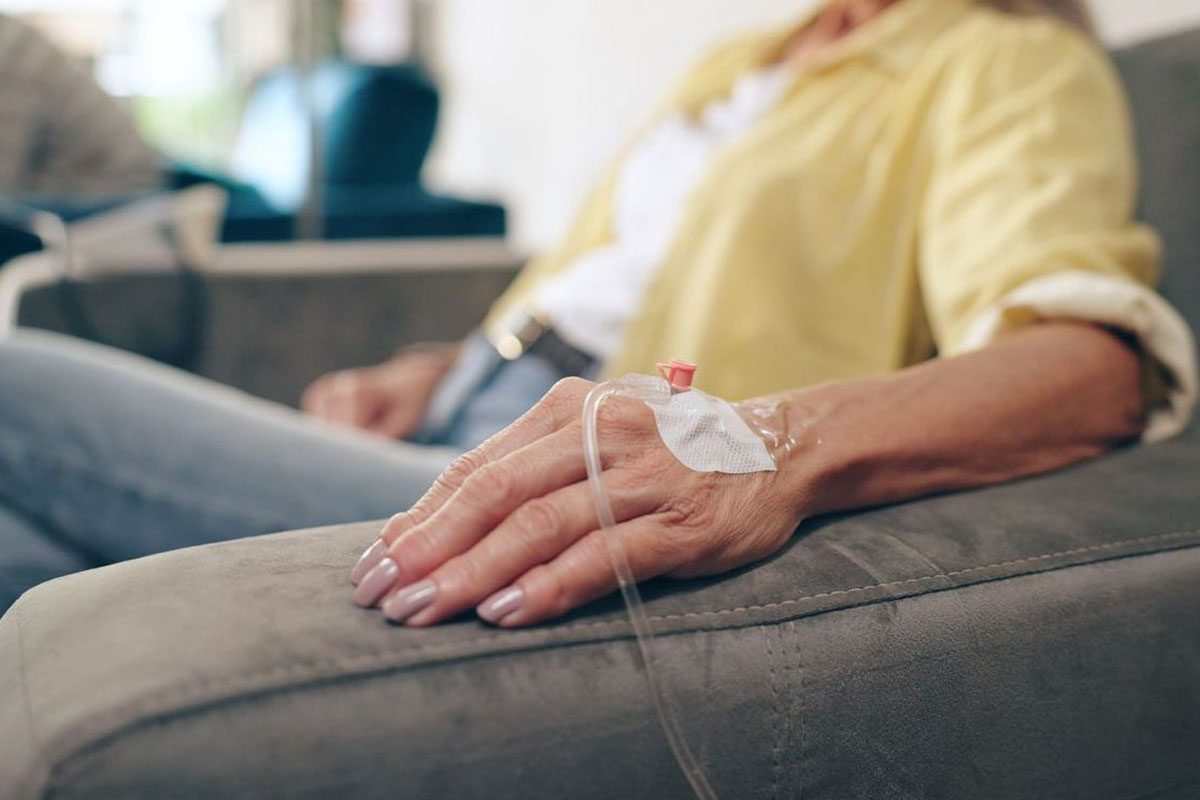ABSTRACT
Objective: While sexually and gender diverse (SGD) people have higher odds of alcohol use disorder (AUD) compared to heterosexual and cisgender people, AUD treatment access and use disparities are not well characterized. The purpose of this study is to assess differences in AUD treatment among SGD versus non-SGD populations.
Methods: A retrospective cohort study was performed using data from a federally qualified health center electronic health record system in Boston, Massachusetts. Patients were 18 years or older with an International Classification of Diseases (ICD)-9 or ICD-10 AUD diagnosis and any clinic visit from January 2013 until June 2021 (N = 3,607). Treatment for AUD was identified using binary variables for medication prescription orders and visits for AUD.
Results: Among patients identifying as lesbian/gay, 6.9% had an AUD diagnosis, as compared to 2.6% of patients identifying as straight/heterosexual (P < .001). The prevalence of AUD was higher in the gender diverse group as compared to the cisgender group (5.5% vs 4.4%, P < .001). There were no significant differences in receipt of a prescription for injectable naltrexone, acamprosate, or disulfiram between SGD and non-SGD patients. For oral naltrexone, 16.1% of sexually diverse patients received a prescription, as compared to 9.8% of straight/heterosexual patients (P < .001). For visits, both the straight/heterosexual cohort and the cisgender cohorts had the lowest proportion of AUD-related pharmacotherapy and individual psychotherapy visits, as compared to SGD cohorts.
Conclusions: SGD patients had higher proportions of AUD diagnosis and AUD care utilization through behavioral health as compared to non-SGD patients.
J Clin Psychiatry 2023;84(5):23m14812
Author affiliations are listed at the end of this article.
Members Only Content
This full article is available exclusively to Professional tier members. Subscribe now to unlock the HTML version and gain unlimited access to our entire library plus all PDFs. If you’re already a subscriber, please log in below to continue reading.
References (33)

- Hughto JMW, Quinn EK, Dunbar MS, et al. Prevalence and co-occurrence of alcohol, nicotine, and other substance use disorder diagnoses among US transgender and cisgender adults. JAMA Netw Open. 2021;4(2):e2036512. PubMed CrossRef
- Reisner SL, Biello KB, White Hughto JM, et al. Psychiatric diagnoses and comorbidities in a diverse, multicity cohort of young transgender women: baseline findings from project lifeskills. JAMA Pediatr. 2016;170(5):481–486. PubMed CrossRef
- Rowe C, Santos GM, McFarland W, et al. Prevalence and correlates of substance use among trans female youth ages 16–24 years in the San Francisco Bay Area. Drug Alcohol Depend. 2015;147:160–166. PubMed CrossRef
- Jun HJ, Webb-Morgan M, Felner JK, et al. Sexual orientation and gender identity disparities in substance use disorders during young adulthood in a United States longitudinal cohort. Drug Alcohol Depend. 2019;205:107619. PubMed CrossRef
- USTS Reports [Internet]. US Trans Survey website. https://www.ustranssurvey.org/reports. 2015. Cited February 25, 2021.
- Williams EC, Frost MC, Rubinsky AD, et al. Patterns of alcohol use among transgender patients receiving care at the Veterans Health Administration: overall and relative to nontransgender patients. J Stud Alcohol Drugs. 2021;82(1):132–141. PubMed CrossRef
- Talley AE, Hughes TL, Aranda F, et al. Exploring alcohol-use behaviors among heterosexual and sexual minority adolescents: intersections with sex, age, and race/ethnicity. Am J Public Health. 2014;104(2):295–303. PubMed CrossRef
- Gonzales G, Przedworski J, Henning-Smith C. Comparison of health and health risk factors between lesbian, gay, and bisexual adults and heterosexual adults in the United States: results from the national health interview survey. JAMA Intern Med. 2016;176(9):1344–1351. PubMed CrossRef
- McGeough BL, Aguilera A, Capriotti MR, et al. Understanding co-occurring depression symptoms and alcohol use symptoms among cisgender sexual minority women. J Gay Lesbian Soc Serv. 2021;33(4):427–450. CrossRef
- Diamant AL, Wold C, Spritzer K, et al. Health behaviors, health status, and access to and use of health care: a population-based study of lesbian, bisexual, and heterosexual women. Arch Fam Med. 2000;9(10):1043–1051. PubMed CrossRef
- McCabe SE, Hughes TL, Bostwick WB, et al. Sexual orientation, substance use behaviors and substance dependence in the United States. Addiction. 2009;104(8):1333–1345. PubMed CrossRef
- Coulter RWS, Jun HJ, Calzo JP, et al. Sexual-orientation differences in alcohol use trajectories and disorders in emerging adulthood: results from a longitudinal cohort study in the United States. Addiction. 2018;113(9):1619–1632. PubMed CrossRef
- Stanton AM, Batchelder AW, Kirakosian N, et al. Differences in mental health symptom severity and care engagement among transgender and gender diverse individuals: findings from a large community health center. PLoS One. 2021;16(1):e0245872. PubMed CrossRef
- Batchelder AW, Stanton AM, Kirakosian N, et al. Mental health and substance use diagnoses and treatment disparities by sexual orientation and gender in a community health center sample. LGBT Health. 2021;8(4):290–299. PubMed CrossRef
- Reisner SL, Pardo ST, Gamarel KE, et al. Substance use to cope with stigma in healthcare among us female-to-male trans masculine adults. LGBT Health. 2015;2(4):324–332. PubMed CrossRef
- McCabe SE, Bostwick WB, Hughes TL, et al. The relationship between discrimination and substance use disorders among lesbian, gay, and bisexual adults in the United States. Am J Public Health. 2010;100(10):1946–1952. PubMed CrossRef
- Johnson EEH, Wilder SMJ, Andersen CVS, et al. Trauma and alcohol use among transgender and gender diverse women: an examination of the stress-buffering hypothesis of social support. J Prim Prev. 2021;42(6):567–581. PubMed CrossRef
- Scroggs B, Love HA. Understanding sexual and gender minority substance use through latent profiles of ecological systems. Subst Abus. 2022;43(1):640–648. PubMed CrossRef
- Wolfe HL, Biello KB, Reisner SL, et al. Transgender-related discrimination and substance use, substance use disorder diagnosis and treatment history among transgender adults. Drug Alcohol Depend. 2021;223:108711. PubMed CrossRef
- Medication for the treatment of alcohol use disorder: a brief guide. Substance Abuse and Mental Health Services Administration. National Institute on Alcohol Abuse and Alcoholism. 2015. https://store.samhsa.gov/system/files/sma15-4907.pdf
- Pharmacological Treatment of Patients With Alcohol Use Disorder. Psychiatry Online. 2018. Cited February 8, 2021. https://psychiatryonline.org/doi/book/10.1176/appi.books.9781615371969
- Kelly JF, Humphreys K, Ferri M. Alcoholics Anonymous and other 12‐step programs for alcohol use disorder. Cochrane Database of Systematic Reviews. Cochrane Library. 2020. Cited February 4, 2022. https://www.cochranelibrary.com/cdsr/doi/10.1002/14651858.CD012880.pub2/full
- Ray LA, Bujarski S, Grodin E, et al. State-of-the-art behavioral and pharmacological treatments for alcohol use disorder. Am J Drug Alcohol Abuse. 2019;45(2):124–140. PubMed CrossRef
- Key Substance Use and Mental Health Indicators in the United States: Results from the 2020 National Survey on Drug Use and Health. Substance Abuse and Mental Health Services Administration; 2021:156.
- TIP 42: Substance Use Treatment for Persons With Co-Occurring Disorders. Substance Abuse and Mental Health Services Administration. 2020. Cited November 28, 2022. https://store.samhsa.gov/product/tip-42-substance-use-treatment-persons-co-occurring-disorders/PEP20-02-01-004
- Kroenke K, Spitzer RL, Williams JBW. The PHQ-9: validity of a brief depression severity measure. J Gen Intern Med. 2001;16(9):606–613. PubMed CrossRef
- Mental Health Medications. NAMI: National Alliance on Mental Illness. Cited December 13, 2022. https://www.nami.org/About-Mental-Illness/Treatments/Mental-Health-Medications
- STROBE: STrengthening the Reporting of OBservational studies in Epidemiology. Cited December 11, 2022. https://www.strobe-statement.org/
- 2020 NSDUH Detailed Tables. CBHSQ Data. Substance Abuse and Mental Health Services Administration. 2020. Cited February 4, 2022. https://www.samhsa.gov/data/report/2020-nsduh-detailed-tables
- Leung JG, Narayanan PP, Markota M, et al. Assessing naltrexone prescribing and barriers to initiation for alcohol use disorder: a multidisciplinary, multisite survey. Front Psychiatry. 2022;13:856938. PubMed CrossRef
- Williams ND, Turpin RE, Akré EL, et al. Disparities in mental health care access among persons differing in sexual identity: nationally representative findings. Psychiatr Serv. 2022;73(4):456–459. PubMed CrossRef
- Perlson JE, Walters OC, Keuroghlian AS. Envisioning a future for transgender and gender-diverse people beyond the DSM. Br J Psychiatry. 2021;219(3):471–472. PubMed CrossRef
- Wu CA, Keuroghlian AS. Moving beyond psychiatric gatekeeping for gender-affirming surgery. JAMA Surg. 2023;158(3):231–232. PubMed CrossRef






